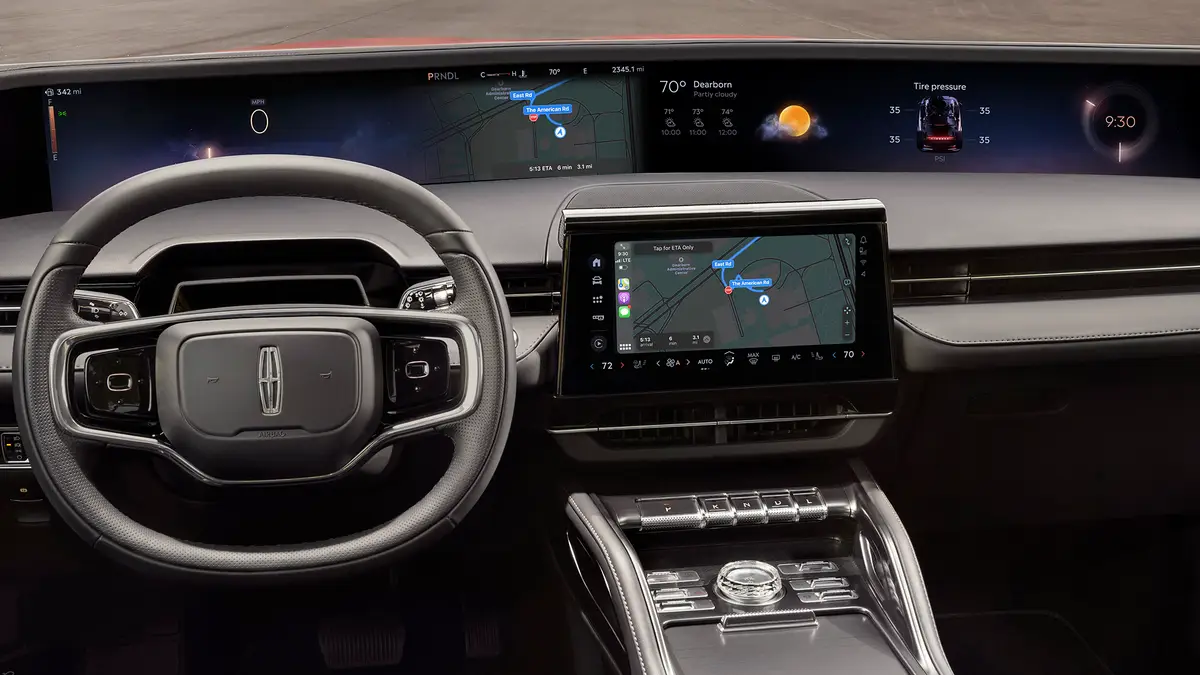
That gargantuan dashboard you see staring back at you isn’t a concept. Nor is it something that is only available on high-end vehicles, like the top-of-the-line Mercedes or BMW EV models. Nor is it the latest and greatest from the minds of Tesla.
It’s a Ford.
Actually, it’s a Lincoln – Ford’s luxury brand, to be exact. The fact this new 48″ model dash is available in their Nautilus SUV is the story of mega-dashboards going mainstream. I’m surprised they don’t stick a “Wide Load” banner displayed across it.
Detroit Free Press auto journalist Mark Phelan’s headline fawns all over this tech breakthrough:
“Ford’s 2024 Lincoln Nautilus gets massive instrument panel that’s like nothing you’ve seen”
Actually, if you’re a reader of this blog and/or have attended our CES webinars during the past few years, you have seen this before. Several times.
That’s because we picked it out as a burgeoning trend in automotive technology all he way back to the pandemic year of 2020 when CES squeezed in its January show ahead of the COVID shutdown.
That year, we were treated to a Chinese concept called the Byton. It was a beautiful car that never made it into mass production. Among its many features was the Godzilla of infotainment dashboards – the first pillar-to-pillar model (P2P) we’d ever seen, dwarfing Tesla’s iPad-like screen, the one that generated all those “oh wows” when Elon Musk first rolled out those original Model S beauties.
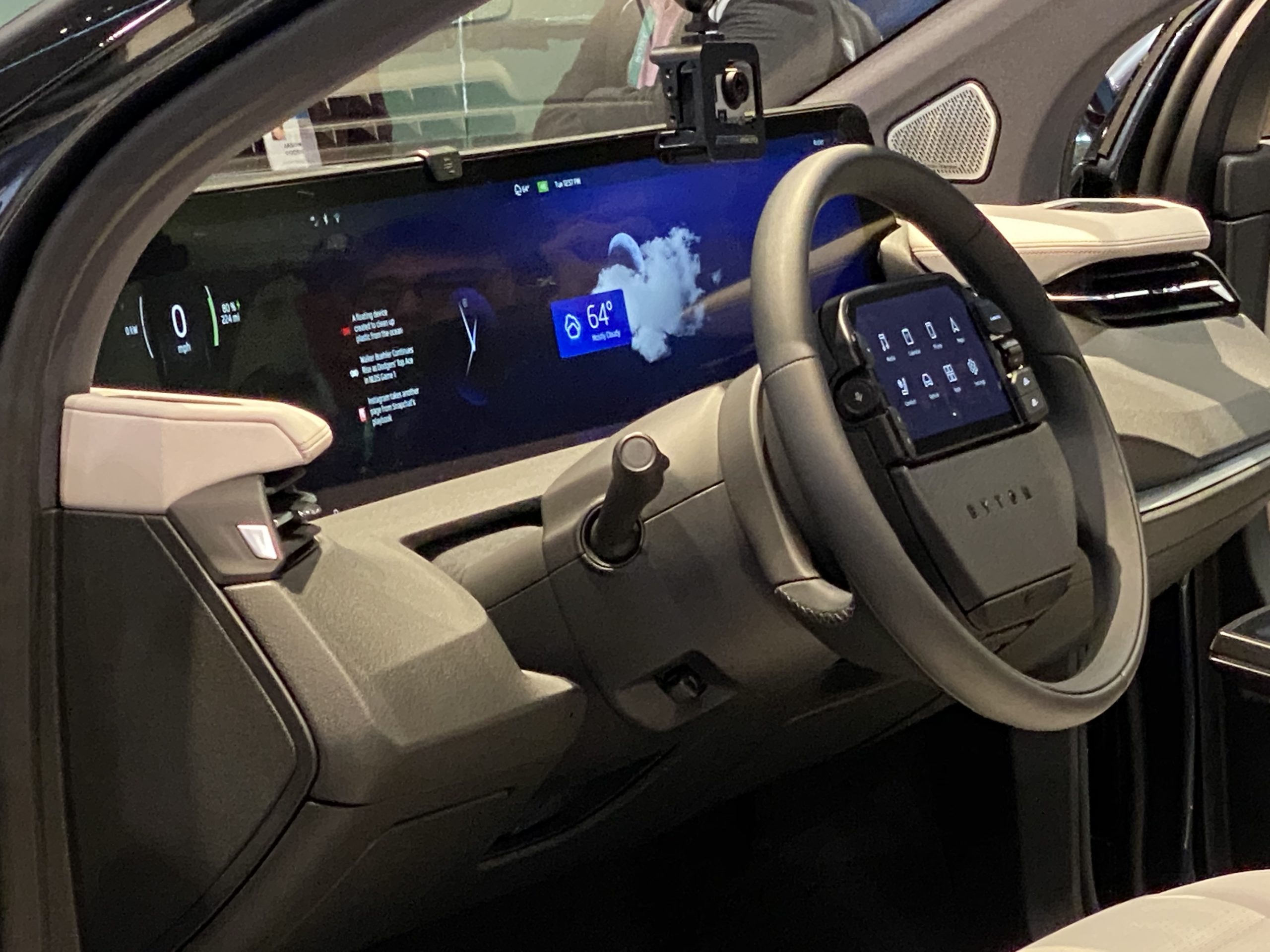
It was the beginning of a trend, the effects of which will undoubtedly be felt by radio as well as any other content platforms with a desire to stand out on a piece of beautiful glass “real estate” powered by AI.
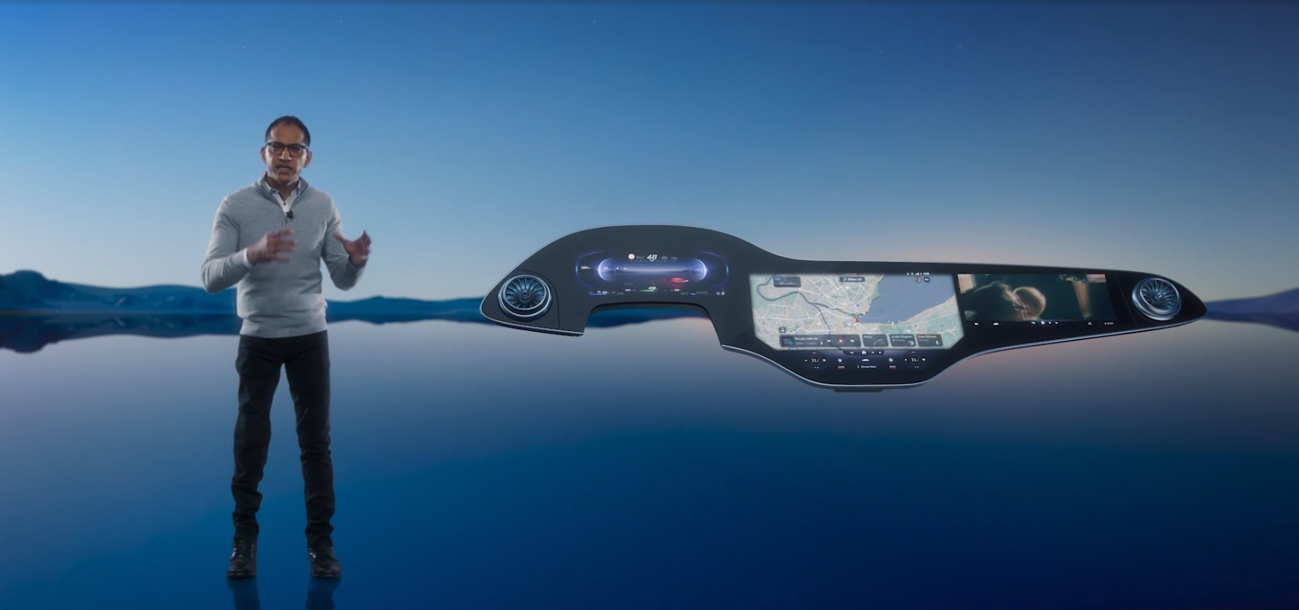
While Byton eventually bit the dust, Mercedes-Benz followed with their massive HyperScreen in 2020, the year CES was forced to go virtual. But even watching CES highlights on our computer screen, it was obvious this Gargantuan dashboard movement was becoming a trend.
Soon enough, fledgling startups from around the world parroted these elongated P2P dashboard concepts. From the Togg out of Turkey (pictured below) to the Vinfast line from Vietnam, these stretched-out screen concepts were actually becoming common at CES.
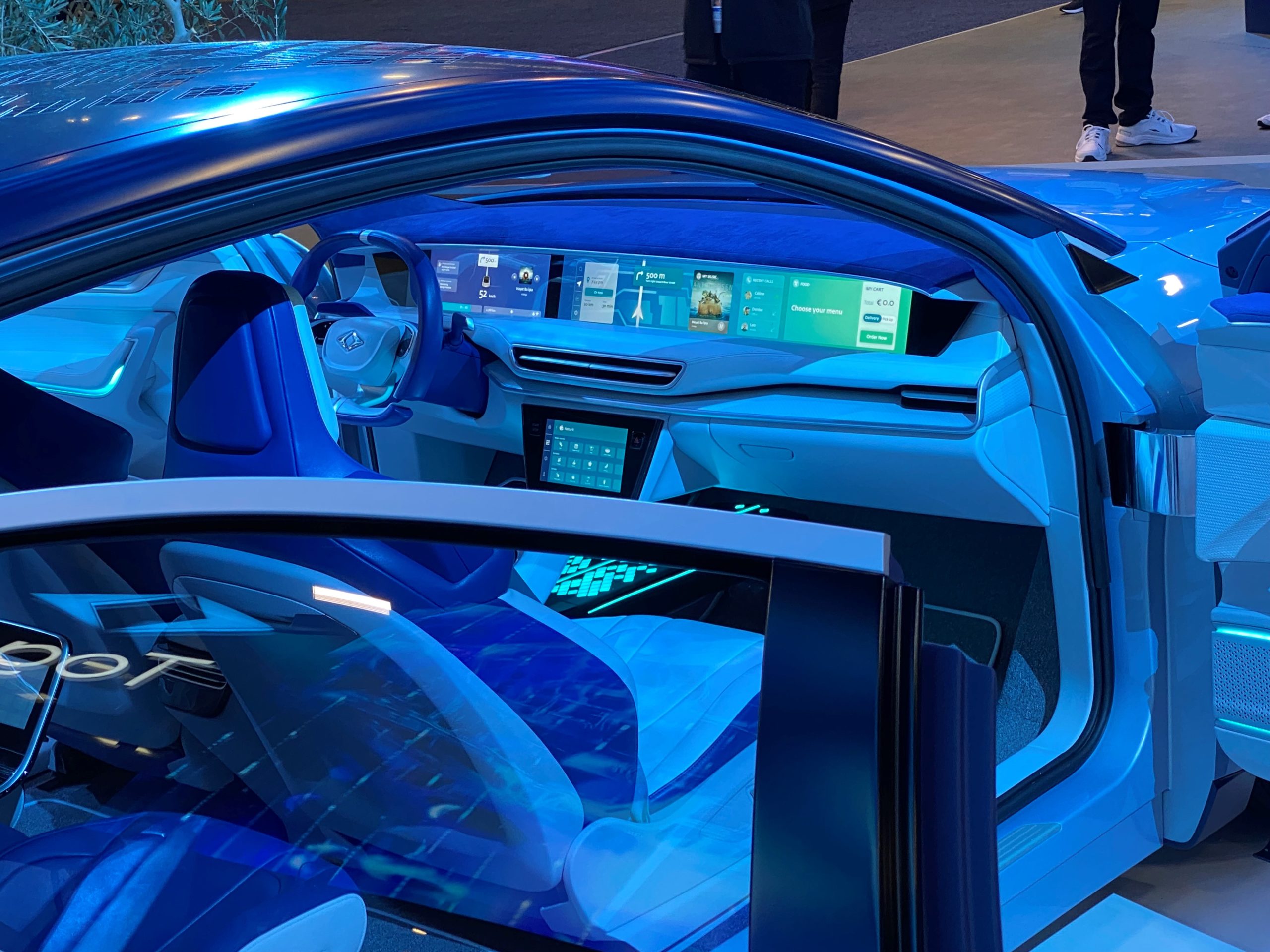
So is it any surprise a domestic automaker – in this case, Lincoln, would jump into the fray? You might even ask, “What took them so long?”
Part of the reason for more screen space is the obvious demand for more content – in many of these expanded screens, designers are embedding in virtual meeting platforms like Zoom as well as gaming capabilities, too. Some of these distractions are thankfully limited to the passenger seat and the far right section of the big screen. But it’s obvious the main thrust of these initiatives is to entertain other occupants of cars (and to monetize them as well).
Why more content? In EVs where it may require 30, 40 minutes or more to recharge the battery, a driver’s got to do something. As we learned at CES 2024, we’re nearing the point that if you can do it on a phone or tablet, you’ll be able to replicate the activity on your car’s higher resolution screen. Some of these models display graphics, video, and other content in 4K.
We watched a movie on a BMW model with a P2P dropdown screen positioned between the front and back seats featuring 8K and killer sound. That’s better than what most of us have in our homes.
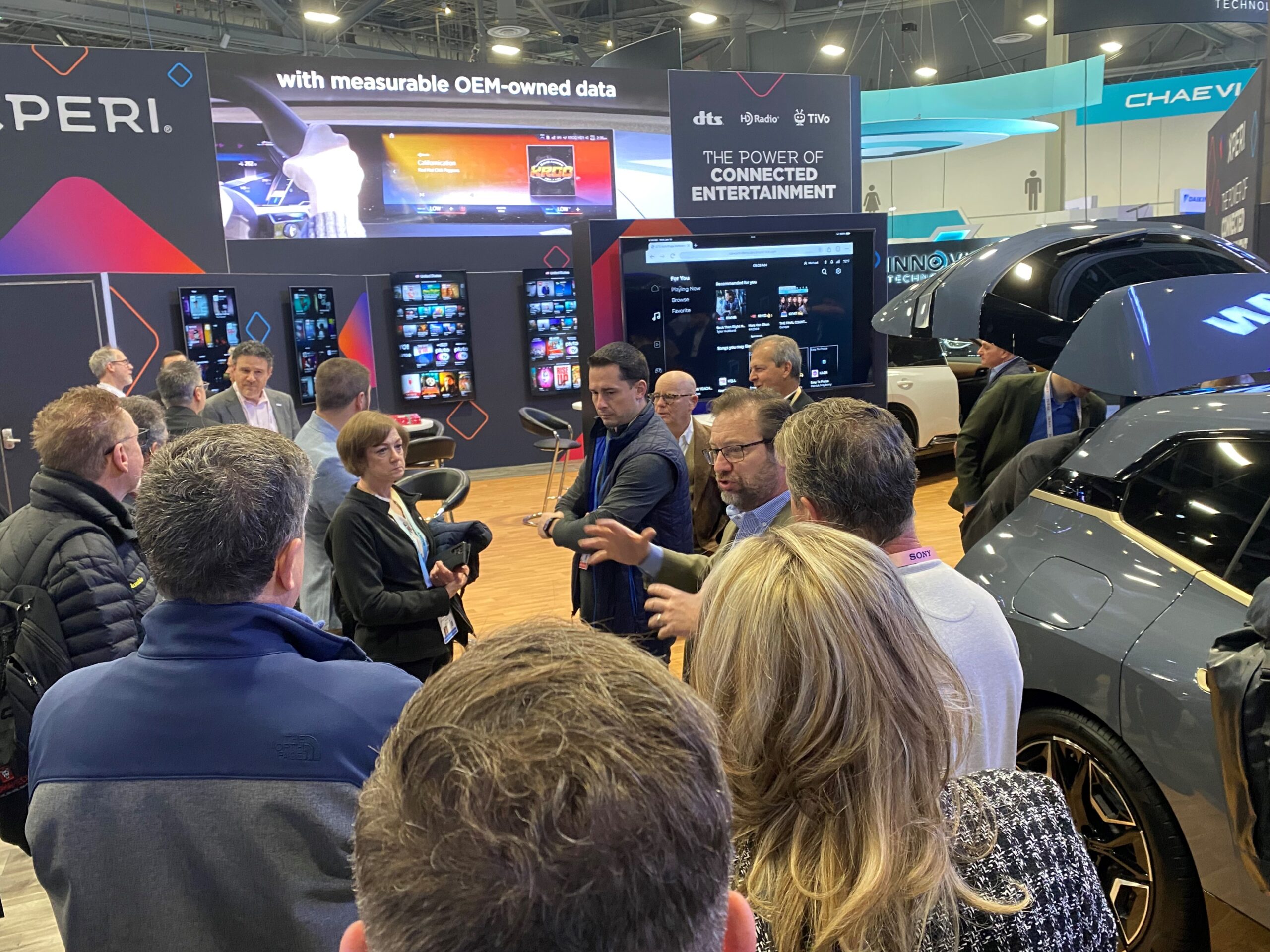
In this expanded display space how will broadcast radio – once the center ring of entertainment in cars – even get noticed? Xperi to the rescue. On one of our open CES days, we invited both of our tours to join Joe D’Angelo and the Xperi team at their spacious exhibit in auto-rich West Hall to take an in-depth look at DTS AutoStage, the platform where local radio looks stellar. Joe walked our attendees through the latest and greatest Xperi advancements, including availability on an expanding array of automotive brands throughout the domestic and foreign industries. In fact, there was even a BMW motorcycle on display with HD Radio featured on its screen.
With Lincoln on board and committed to widescreen displays, other car makers will rapidly follow suit. Its sister, Ford, will also offer the Digital Experience. And unlike General Motors, the Lincoln/Ford platform will include Apple CarPlay – a smart move.
By the way, the smaller screen you see in the Lincoln Nautilus (and pictured here) connects to Google’s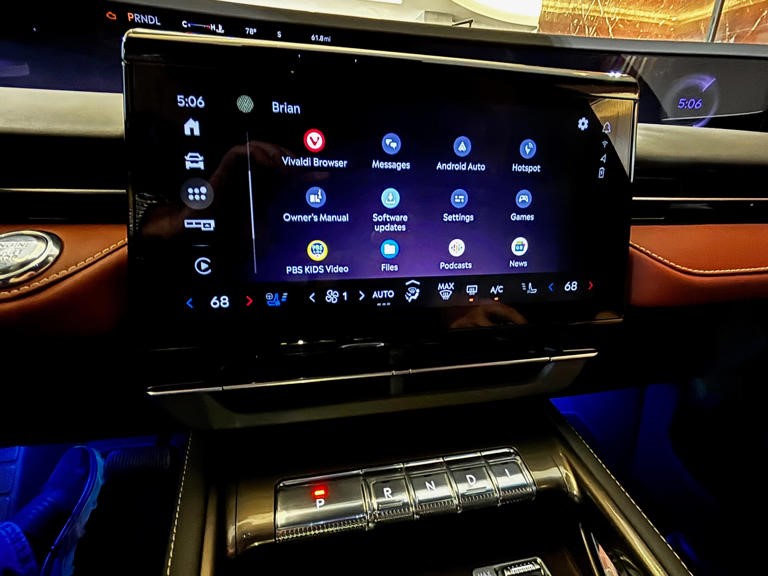 app store, allowing the owner to download apps, and that would logically include those developed to be compatible with Android – yes, that means radio station apps – as long as the driver looks down occasionally at this screen.
app store, allowing the owner to download apps, and that would logically include those developed to be compatible with Android – yes, that means radio station apps – as long as the driver looks down occasionally at this screen.
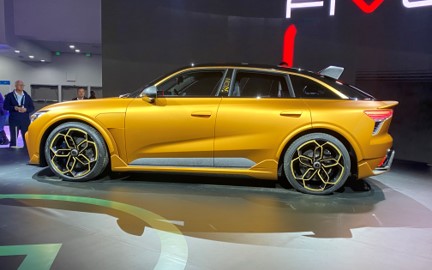
Like many of these mondo screens, the technology is becoming more highly personalized. One of the most impressive applications of this technology was from a small U.S. automaker, Mullen (pictured) – a gorgeous sports car concept (pictured) coming later this year.
It doesn’t require a key because its facial recognition “sees” the driver coming, unlocks the door, and adjusts all settings – heating, cooling, seats, mirrors and infotainment – to its owner’s specifications. (Let’s hope she’s an FM radio fan.)
It’s coming fast. This year at CES, it felt like the automotive/infotainment space was blasting in the left lane. While autonomous may be taking the next exit, EVs continue to stand out, as do the ways in which drivers and passenger will entertainment and inform themselves.
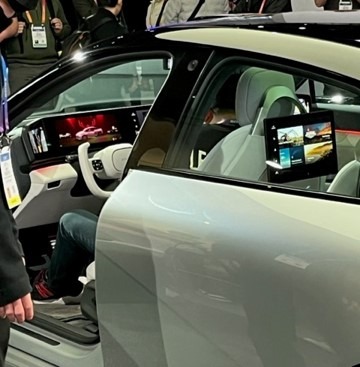 The “screenification” of cars and trucks – as CTA’s Steve Koenig calls it – is an ongoing CES trend showing no sign of slowing down soon. While AI will be a major focus of our CES 2024 webinar next month (details below), we will provide info, color, and background on what’s happening in cars.
The “screenification” of cars and trucks – as CTA’s Steve Koenig calls it – is an ongoing CES trend showing no sign of slowing down soon. While AI will be a major focus of our CES 2024 webinar next month (details below), we will provide info, color, and background on what’s happening in cars.
While still radio’s #1 listening location, it is hyper-evolving from the good old days when a CD player was the only option for AM/FM radio. The two knobs/six presets days are in the rearview mirror, a distant memory of the automotive past.
Radio broadcasters’ ability to create great brands that generate loyalty and habitual listening will be put to the test with this new generation of in-dash technology.
Buckle up.
Our free webinar – “CES 2024 – Radio In An AI-Driven World” – is set for Thursday, February 8th. It is filling fast and “seating” is limited. Register today and bring the whole staff. Info/sign up here.
- The New Pope Was Selected Faster Than Most Radio Organizations Hire New CEOs - May 12, 2025
- What If Radio Tried Something Right Out Of Left Field? - May 9, 2025
- Why Radio PDs Are A Lot Like NBA Coaches - May 8, 2025




I recently had to pull off the road and stop in order to change the radio station in a rental Mercedes.
Yeah, it happens and it’s not good. Renting one of these vehicles can be downright dangerous.
It looks really cool. Jetsons here we come. Was the question asked on how durable the tech is? How well will it hold up going from a few months of being frozen, to a few months of being cooked over several years. Also all the vibrations and shocks that come from the roads and how expensive will it be to fix if/when it breaks
Don’t ask. This is expensive hardwre and software. My advice? Avoid the photholes!
Lawyers must be salivating at the prospects of the new TV ads… “If you were injured in an accident while adjusting your infotainment system..call ‘Burns and Crispy’…
That notwithstanding, the potential for subscriptions and repairs to the electronics in a vehicle are limitless. My 2005 BMW 540i came with a navigation system (subscription-free) that failed 6 months into it. The cost to fix it? $300. I kept that car for 6 years and never got that fixed. (Back then the satellite option was another $500.)
Consumers and legislators might do well to consider telling car makers to make their vehicles a bit safer, and to develop technology that will help the driver pay attention. Touchscreens can only tend to distract us more and more. Bring back the buttons, knobs and get off my lawn!
The safety issue has been at the heart of the “infotainment revolution” for years now. But I think the aautonomous issue (especially with Musk and Autopilot) overshadows it. Personally, my Lexus RX 350 is a dashboard accident waiting to happen. Thanks, Dave, and please drive carefully!
I deliver cars for Bergstrom GM dealers in Wisconsin, and it appears, for now, AM/FM radio is still part of the entertainment lineup. For an AM nerd like me, I can choose “tune” to enter 6-7-0 or 7-2-0 or 8-9-0 for my favs. And strike “add to preset” buttons easily. Thanks GM, makes my travels enjoyable!
As someone who grew up in Madison and whose family came from NE Wisc. (I even remember Bergstrom Paper), this actually raises some questions: Do WSCR, WGN, and WLS really come in better than WTMJ? (They likely would around Madison, but even in NE Wisc.?) And, would you need to rely much on FM (instead of AM) for, say, WHBY or WTAQ?
Glad it’s working for you, Leo, but if you’re in the market for an EV, it might not work out this way.
God forbid one of those huge screens fail due to a hidden fault such as a cold solder joint.The screens at first glance would seem to provide much information,but I feel they would be too big of a distraction.
The driver needs to keep their eyes on the road,not a screen. Do any of these screens offer a “simplified ” view where just the essential info is shown?
Most of the time, customization of content means making choices. There’s almost always something on the screens.
Correct me if I’m wrong but when cars first got a radio the same things were being said about safety as they are now.
I think these screens are worse (and I have one now). And I see folks all of the time not paying attention to the task at hand (driving) whether I’m behind the wheel or just as a pedestrian.
I agree with you its a dashboard accident waiting to happen. You can count me against this technology.
You are correct, Jerry, there was quite the kerfuffle when AM radio first made its way in the dashboard. Now, its pillar-to-pillar screens.